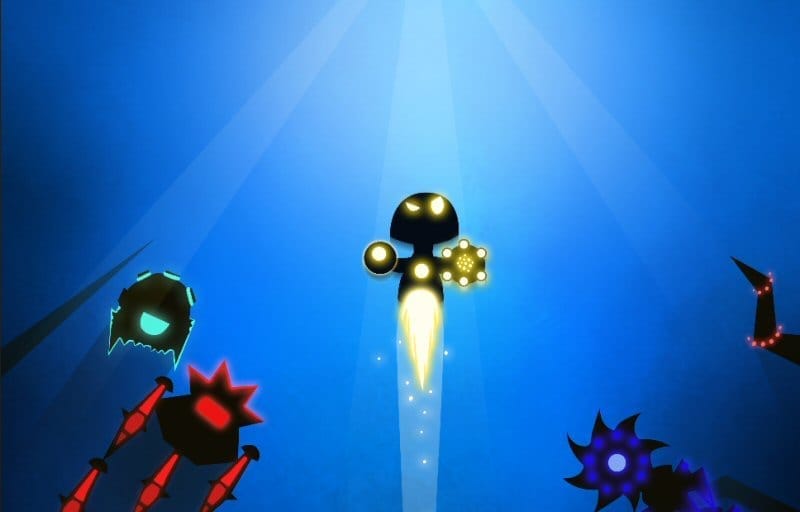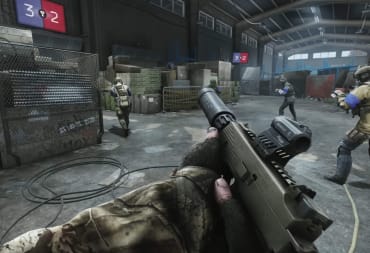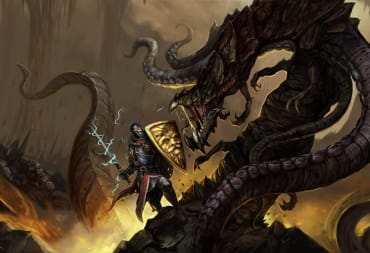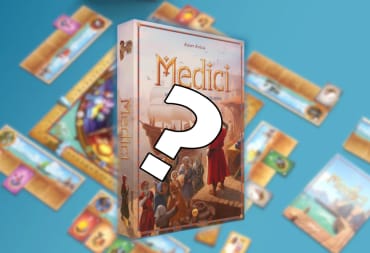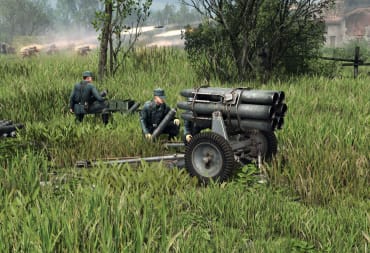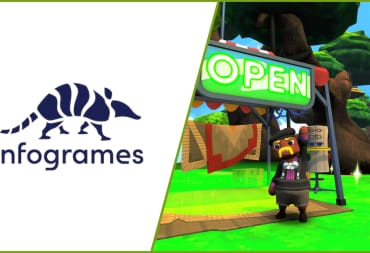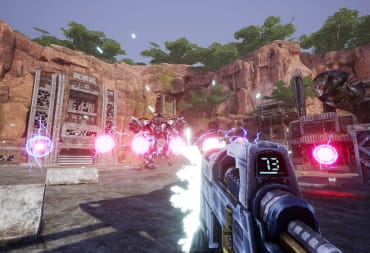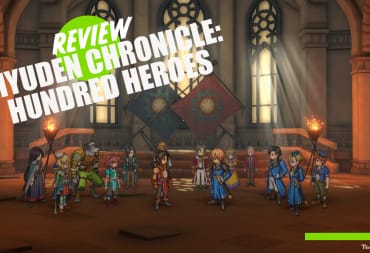The last couple years have been prolific for roguelites and roguelikes alike. Roguelites in particular are becoming relatively common, since there are dozens of them out there and new ones are getting released by the week. In this context, it’s becoming increasingly difficult to surprise players, but it’s even more difficult to create a solid gameplay core. Good Robot is a roguelite that understands this. Instead of focusing in creating wacky synergies, unlocking content and making you farm items, Good Robot makes a point in creating a well tuned and reliable core gameplay loop. Alas, this also means that it may get old faster than you'd like.
https://www.youtube.com/watch?v=MN91Mb0miuc In Good Robot, you take control of the little mechanic being of the title in his quest of shooting everything that's not him. It may seem simple enough as a motivation, but the truth is that it’s exactly how it sounds like. There’s little to nothing in the game about a possible lore aside some snippets of information here and there which is presented more for comedic effect than anything. It’s not a grave offense though. Or even a mild one. Roguelites are not famous for the importance of their storytelling after all. You have guns and the enemies explode if you hit them enough. Anything more than that is a plus.
The core mechanic is quite simple. You have a primary and a secondary weapon. Your primary weapon fires automatically by holding down the left mouse button while the secondary one has a short cooldown. These two weapons can be replaced with the ones dropped by the enemies or purchased on red vending machines, but can’t be modified. This is the first thing that differentiates Good Robot from the majority of roguelites. Whenever you pick up a weapon, that’s it. There are no power ups that change its behavior or that make bullets bounce. If you want your weapon to do something different, you'll need a different weapon altogether.
The positive side is that whenever you find a set up that you like, you’re basically set for the rest of the game. Weapons themselves are not inherently better or worse than other weapons. Some do less damage, but have a very long-range and very fast rate of fire, while others fire very slowly for massive damage. It’s up to your play style.
The problem with this system is that it works at the expense of one of the most iconic element of this genre: item synergy. The two weapons that you can use at any given time don’t really interact with each other. When you pick up a phase blaster, it feels cool at first, but after a while, without a way to make use of your equipment as a whole, it feels like you’re just shooting slightly different bullets. Luckily, there’s a decent variety in weapons and they drop fairly regularly, so you always have a new toy to play with.
Good Robot lacks that sense of discovery and amazement that characterizes the genre. Finding new items, figuring out how they work, inventing strategies around that… all of this is not really present here. You find new weapons to shoot at your enemies in a way a bit different from before. This means that there is not enough variety to keep the game fresh for a long time and the lack of metagame and unlockable elements does not help in this regard as well.
The fact that your offensive options are pretty static does not mean that there’s not a progression system. In your bullet filled adventures, you’ll stumble in differently colored vending machines that will offer you a variety of services in exchange for the money dropped by dead enemies. At the start of each level you’ll find a yellow vending machine that will sell you hats, because apparently robots need those. These hats will absorb the first hit that you take, protecting your health bar instead.
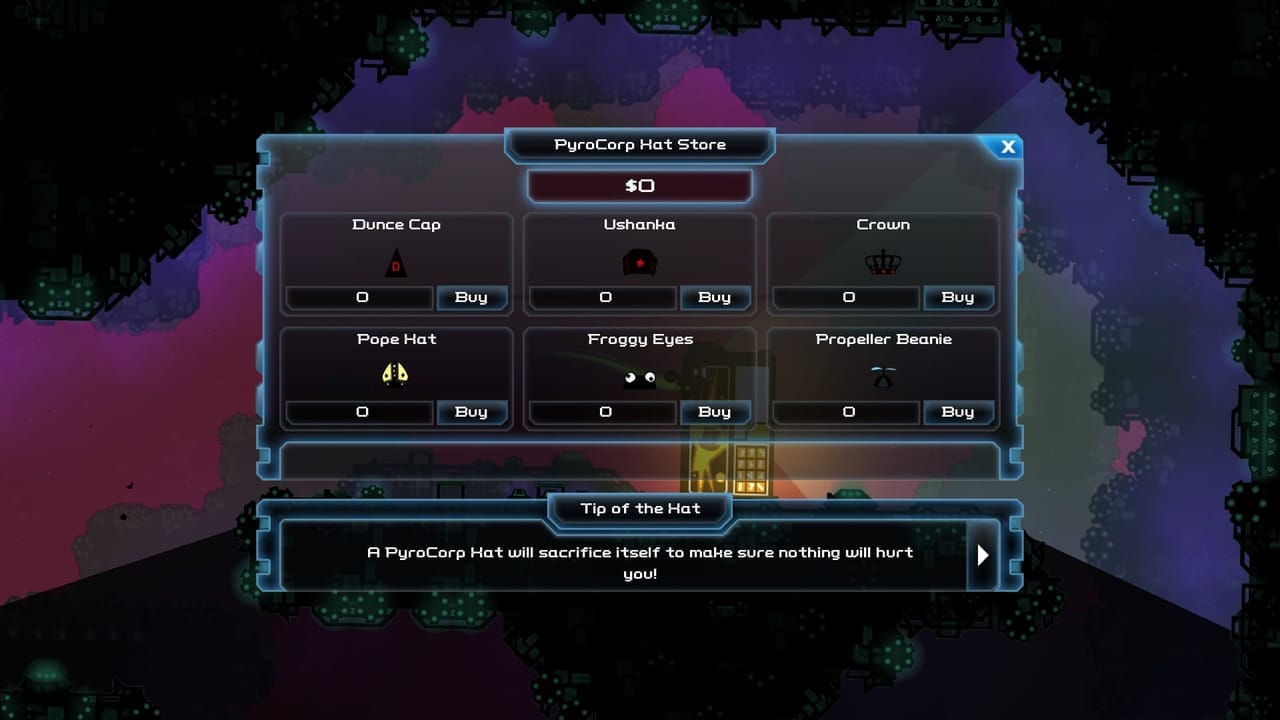
Red vending machines will primarily sell you weapons. If purchased these will, of course, replace your current equipped weapon of the same category. They will also offer you a repair service and even a warranty. The latter is no more than a one-off extra life. If you get destroyed, you will respawn at the start of the level.
Finally there are blue vending machines that will sell upgrades. You can invest the money in increasing your stats, making your robot faster, making his weapons do more damage or fire more quickly. Blue vending machines are also the only way to obtain passive items. Every machine will have a random passive upgrade purchasable. If you buy one, another one takes its place. These upgrades are stuff like a laser pointer that helps you aiming, a radar that shows on the screen the enemies when they’re out of your line of sight or a compass that points in the direction of the exit (pretty useful considering that the game does not have a minimap).
The progression system of Good Robot is as simple as it gets. You exchange money for services. Capitalism as its best. It’s a simple system but it works. The only problem is that, especially in early stages, spending money in the blue vending machines does not feel impactful at all. When you have only enough money to buy a single point into a stat, the difference is barely noticeable. This means that you’re more likely to purchase either the passive items or the weapons, not because they’re more useful or important, but only because they are way more interesting than a +1 in movement speed.
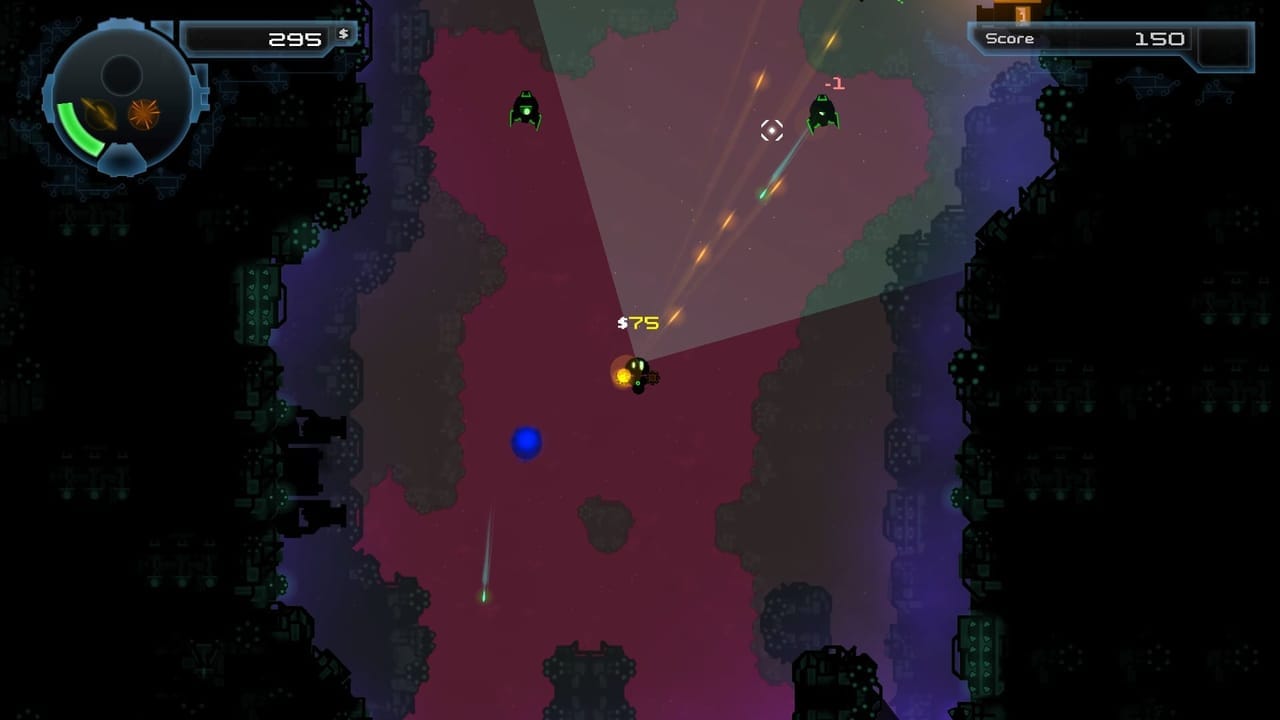
Good Robot is not a perfect game, this much is clear. It doesn’t mean that it’s not an enjoyable one. The actual gameplay of Good Robot is well constructed in its simplicity. The controls are precise, the action is fast and it requires quick thinking. If you are reckless, enemies can surround you pretty easily. AI is not very advanced but the sheer number of the robots on-screen can be enough to put you in a bad spot. You will sometimes find yourself in situations that border bullet hell territory. In these moments, the precision of the controls and quick reflexes will save your life.
Good Robot makes heavy use of vector art with very good results. The simple and clean art style really helps in keeping track of everything that’s on the screen at any given time. A critical aspect in a game where there can be hundreds of bullets coming to you at once. The enjoyable and adrenaline-filled soundtrack also help you to keep the pace and always feels adequate to the action.
The levels lack in variety on the visual standpoint. The terrain in all the stages of the game look similar, to the point that only the type of enemies you face will reveal what level you’re in. On the other hand, the procedural generation of the levels works pretty well, creating stages with a lot of choke points to take advantage of and many blind spots where enemies can appear from. Some levels also have modifiers that make the things more interesting (such modifiers are presented by an icon on the access door to the new level). For example, in some levels enemies don’t appear on the screen unless you’re looking in their direction while in others terrain is electrified so you have to keep the distance. These little additions force the player to always stay on their toes.
At the end of the day, Good Robot is a game that does not add much to the genre. It sticks to the basics without trying to innovate too much. In some respects this is one of its greater strengths. The problem with sticking to the basics is that after few hours that you played Good Robot, it feels like it does not have any more content to offer.
Good Robot was reviewed on Steam using a copy provided by the developer.
Review Summary
Good Robot does not really add anything new to the roguelite genre, but the enjoyable core mechanics make it worth a look
(Review Policy)Have a tip, or want to point out something we missed? Leave a Comment or e-mail us at tips@techraptor.net
